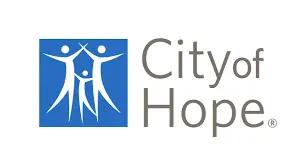
Improving Outcomes in All Ovarian Cancer Subtypes

In an interview with Targeted Oncology, Barbara Buttin, MD, discussed important ovarian cancer research for which results were presented during the 2023 ASCO Annual Meeting.
Ovarian cancer studies today introduce a vast collection of new therapies, which improve outcomes for patients, according to Barbara Buttin, MD. At the 2023 American Society of Clinical Oncology (ASCO) Annual Meeting, updated results from many of these studies were presented, signaling a promising future for patients with this disease.
“The research that I think is going to give us the most significant results are studies involving antibody-drug conjugates. We have 2 antibody-drug conjugates [ADCs], 1 that's now approved…mirvetuximab, and the other antibody-drug conjugate is upifitamab rilsodotin [XMT-153], which targets NaPi2b, which is commonly found on ovarian cancer cells. I think that's going to be another alternative ADC in ovarian cancer. These are very promising agents because they solve the conundrum of decreased toxicity in the setting of platinum resistance, so heavily pretreated patients that never got a break, decreased toxicity with increased efficacy. This helps us with getting the Trojan horse into the cell and releasing the enemy, so to speak. Both of those drugs are extremely promising,” said Buttin, a gynecologic oncologist at
In the future, Buttin hopes that research will focus more on rarer subtypes of ovarian cancer. This will ensure the treatment landscape is advancing for all patients with ovarian cancer.
“I know most of the trials are focusing on the most common types of ovarian cancer, which is the high-grade serous or endometrioid, epithelial ovarian cancer, but we have large populations of patients with the less common subtypes of ovarian cancer, such as low-grade serous. There's a lot of research now focusing on that, and we desperately need better treatments. Even worse, ovarian granulosa cell and for other stromal type tumors are in dire need for new drugs. There was 1 ongoing trial with a targeted agent that is specific for ovarian granulosa cell tumors. We’re very excited about that. There is also always ongoing research that targets ovarian germ cell tumors as well,” Buttin stated.
In the interview, Buttin discussed important ovarian cancer research for which results were presented during the 2023 ASCO Annual Meeting.
Targeted Oncology: At ASCO, final overall survival [OS] results from the DUO-O trial [NCT03737643] were presented. What are your thoughts on this study?
Buttin: The DUO-O trial is not totally finalized yet, but it's an exciting study, and that it's going to be the first time that we're seeing immunotherapy being introduced into the treatment of ovarian cancer. In this study, we had the addition of durvalumab [Imfinzi] and Olaparib [Lynparza] to standard chemotherapy, being carboplatin and paclitaxel plus bevacizumab [Avastin], in a population of patients with BRCA-negative ovarian cancer. [This is] a group of patients that had ways to go in terms of improvement of prognosis. The fact that the addition of immunotherapy plus PARP inhibition made a significant difference, not only in the overall intention-to-treat population, but especially in the HRD-positive population, is phenomenal. I think this will change the standard of care for that group of patients. [It’s] very exciting data. I think it's not totally finalized yet, but this analysis is extremely promising.
What else do you think the DUO-O data will mean for this patient population?
We tend to look at patients with advanced ovarian cancer in terms of stratifying everyone based on biomarker status. We are looking at mutation status first. Do they have BRCA mutations or BRCA-related genes? That’s only going to cover about 25% or so of all patients. If they don't, then we're going to do genomic analysis of the tumor to see if they have HRD, and we treat them based on that as far as whether they're a candidate for PARP inhibition in remission. If they're neither one of those things, then we have the patients who are BRCA-negative, HRD-negative with ovarian cancer, and these stage III and IV patients still have the toughest prognosis. Right now, the standard of care for them is chemotherapy plus bevacizumab and, of course, surgery. Then once patients are in remission, we give bevacizumab maintenance. Bevacizumab alone has never really achieved an overall survival benefit.
We have never seen an overall survival benefit in this group of patients. We’ve had a PFS benefit with use of bevacizumab over placebo, but never an overall survival benefit. Now suddenly, we have the addition of durvalumab [Imfinzi] and then a PARP inhibitor added into the maintenance for that group of patients, and we have a significant improvement in progression-free survival [PFS] and looks like overall survival hopefully, once that's finalized, is also going to be significant. That's going to be a first that's going to happen for this group of patients. It's really a landmark trial.
Results from the OVAL study [NCT03398655] were also presented at ASCO, and the trial failed. What other research can oncologists expect for these patients with recurrent, platinum-resistant ovarian cancer?
I thought it was an interesting agent that was studied here. OVAL was just 1 of several studies. This was a phase 3 of several studies that aimed at improving the prognosis for our less fortunate patients with ovarian cancer, and those are the platinum-resistant patients. Those with recurrent ovarian cancer that have platinum-resistant disease don't have great options at the moment. But luckily, there's a lot of research centered around exactly that population.
The VB-111 compound that was used in the OVAL trial, I thought was an exciting drug, but complicated. It did have a number of difficulties associated with its use, and ultimately did not make much difference at all in terms of PFS, OS, or response rate in this population. However, that does not discourage me whatsoever because we've had a number of other trials in that same realm for our platinum-resistant patients, and I think the future for them is going to lie in antibody-drug conjugates.
For example, the MIRASOL trial [NCT04209855] that was also presented was another phase 3 trial in the platinum-resistant ovarian cancer population, and for the first time ever in that population, we saw an overall survival difference with the use of a new ADC called mirvetuximab. That was an extremely successful trial in a similar patient population, much lower toxicity than the backbone of weekly paclitaxel that was used in OVAL and was extremely successful in terms of tumor reduction rate and overall response rate. There was also an overall survival and progression-free survival benefit in this very unfortunate group of patients. There is a lot of hope for them, even though the OVAL trial was negative.
Post hoc analysis data from the PAOLA-1 trial [NCT02477644] were announced at ASCO this year. What can you tell the oncology community about this abstract?
The PAOLA-1 trial was the international trial that showed us the benefit of using the combination of PARP and bevacizumab, specifically in the population of ovarian cancer patients with HRD. Again, we you know that our BRCA-positive patients have the best prognosis, and our BRCA-negative/HRD-negative patients have the worst prognosis in terms of progression-free and overall survival. PAOLA-1 showed us that PARP with bevacizumab improves outcomes in both groups, most importantly for the HRD-positive population, and that's where the indication was made.
The post hoc analysis showed us that basically, progression while on olaparib, the PARP inhibitor and bevacizumab is a core prognostic sign, which of course, makes sense in that population. The from first to second progression in the patients who received PRAP vs placebo was significantly different in that group. It is worth pushing these patients towards the doublet in in terms of maintenance therapy to prolong that disease-free survival between recurrences as much as possible, and that's kind of what the takeaway was here.
What is your take on the post hoc analysis of the PRIME study [NCT04549935], which was presented at ASCO?
The post hoc analysis of the PRIME study really looked at the patients with residual disease following upfront therapies. Again, this is a group with a relatively poor prognosis, and with measurable disease at the end of their primary therapy. The analysis showed that even in that scenario, maintenance therapy with niraparib [Zejula] enhances both antitumor activity and significantly prolongs progression-free survival. Just because we may feel like the primary therapy failed, we’ve given your patient platinum, taxane, and surgery and somehow at the end of all that, there's still a measurable disease is that a complete failure and you need to go off into second-line therapy. But the answer here would suggest that no, you can still go on to a PARP maintenance, and that is regardless of biomarkers status. That benefit applied the most for those with positive biomarkers such as HRD, but it did apply to the overall intention to treat population, which is encouraging. I don't think PARP inhibitors are totally done yet as primary therapy for tumor shrinkage, even though that indication has been withdrawn.
What other studies do you think will be important for the ovarian cancer landscape?
The research that I think is going to give us the most significant results are studies involving antibody-drug conjugates. We have 2 antibody-drug conjugates, the 1 that's now approved, and has just shown the most impressive results that I mentioned previously, is mirvetuximab. The other antibody-drug conjugate is upifitamab rilsodotin, which targets NaPi2b, which is commonly found on ovarian cancer cells. I think that's going to be another alternative ADC in ovarian cancer. These are promising agents because they solve the conundrum of decreased toxicity in the setting of platinum resistance, so heavily pretreated patients that never got a break, decreased toxicity with increased efficacy. This helps us with getting the Trojan horse into the cell and releasing the enemy, so to speak. Both of those drugs are extremely promising.
I think we're going to start seeing them in the frontline, and they're going to be used in the frontline, platinum-sensitive trials.
Can you discuss the unmet needs in the ovarian cancer space that you hope are addressed in ongoing or upcoming research?
The biggest unmet need that we've had over the past 2 decades is still early detection and prevention. That is still a very much an open field for research, not just in terms of imaging, but for the introduction of novel imaging modalities, as well as biomarker research to help with early detection, and hence, the prevention of ovarian cancer. I think that's always a big one. Then of course, we have all the rare subtypes. I know most of the trials are focusing on the most common types of ovarian cancer, which is the high-grade serous or endometrioid, epithelial ovarian cancer, but we have large populations of patients with the less common subtypes of ovarian cancer, such as low-grade serous. There's a lot of research now focusing on that, and we desperately need better treatments. Even worse, ovarian granulosa cell and for other stromal type tumors are in dire need for new drugs. There was 1 ongoing trial with a targeted agent that is specific for ovarian granulosa cell tumors, so, we’re very excited about that. There's also always ongoing research that targets ovarian germ cell tumors as well.










































